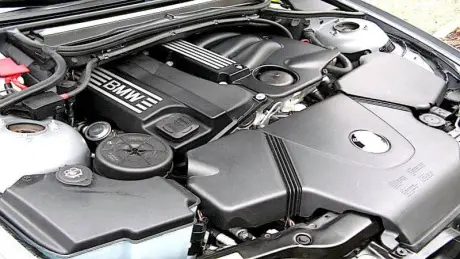
Introduced in 2001, the BMW N42 is a four-cylinder gasoline engine. It was implemented in the BMW 3 Series E46 for the 316i and 318i models and was later succeeded by the N43, N45, and N46 engines. At the time, this powertrain was seen as technologically advanced, not only because of the integrated Double-VANOS and DISA adjustment units but also due to the newly developed Valvetronic system, which first saw its application in the N42.
Most Common BMW N42 Engine Problems
The N42 has a range of small and significant issues, from oil loss and erratic idling to elongated timing chains. Below are the most commonly reported issues:
Stretched Timing Chain

The most well-known issue with the N42 is its timing chain, prone to premature elongation, which can lead to catastrophic engine damage. This usually stems from a faulty chain tensioner, with wear often exacerbated by late or missed oil changes.
When inspecting the vehicle, listening for clacking or rattling noises during a cold engine start and under load changes is crucial. If these sounds are present, the chain is likely already elongated, and imminent engine damage may be on the horizon.
Faulty Valvetronic

The Valvetronic system often presents problems, typically due to a worn eccentric shaft or a defective actuator. A significant symptom of a malfunctioning Valvetronic is notable idle fluctuations.
High Oil Loss/Consumption

The N42, like many older BMW engines, may exhibit high oil loss or consumption. The following areas are most commonly affected:
- Valve cover gasket
- Valve stem seal
- Crankcase ventilation (often abbreviated as CCV)
- Vacuum pump
Defective VANOS Solenoids

The VANOS solenoids are not designed to last indefinitely and can fail over time. When they do, symptoms often manifest as rpm fluctuations in the lower rev range, noticeable power loss, and occasionally starting difficulties.
BMW N42 Engine Specs
| Engine Model | Displacement | Power | Torque | Year Introduced |
|---|---|---|---|---|
| N42B18 | 1,796 cc (1.8L) | 85 kW (115 HP) @ 5,500 RPM | 175 Nm (129 lb-ft) @ 3,750 RPM | 2001 |
| N42B20 | 1,995 cc (2.0L) | 105 kW (143 HP) @ 6,000 RPM | 200 Nm (147 lb-ft) @ 3,750 RPM | 2001 |
Conclusion
Due to its numerous potential issues, the N42 should be approached with caution. Those considering owning an E46 with this engine should set aside financial reserves for potential repairs and contemplate investing in a repair cost insurance policy.
However, if the engine has a consistent and verifiable service history, it can be considered a conditional recommendation. Moreover, it's advisable to ensure that the timing chain, along with its tensioner and guide rail, has been replaced.
Same articles

Understanding Vehicle Inspection and Verification Services: Why They Matter for Every Driver
GuidesVehicle inspection and verification services are an essential but often overlooked part of keeping roads safe and cars legally compliant. Most people only think about inspections when it’s...
KLIFEX Brand Overview: High-Quality Automotive Repair Kits for Affordable Repairs
GuidesThe automotive aftermarket has long needed solutions that combine reliability, durability, and affordability. Many car enthusiasts and services are looking for a way...
Fast, Reliable Vehicle Emissions & Inspection Services Made Simple
GuidesFast, reliable emissions and inspection services are essential for keeping vehicles road-ready, compliant with environmental regulations, and safe for daily driving. If you’re looking for quick...

